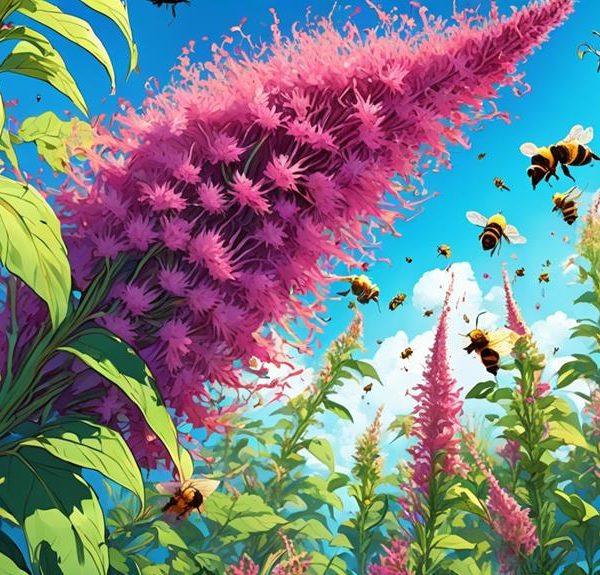Start uncovering the mystery of whether bees are attracted to or repelled by aluminum foil in this informative exploration for beekeepers.
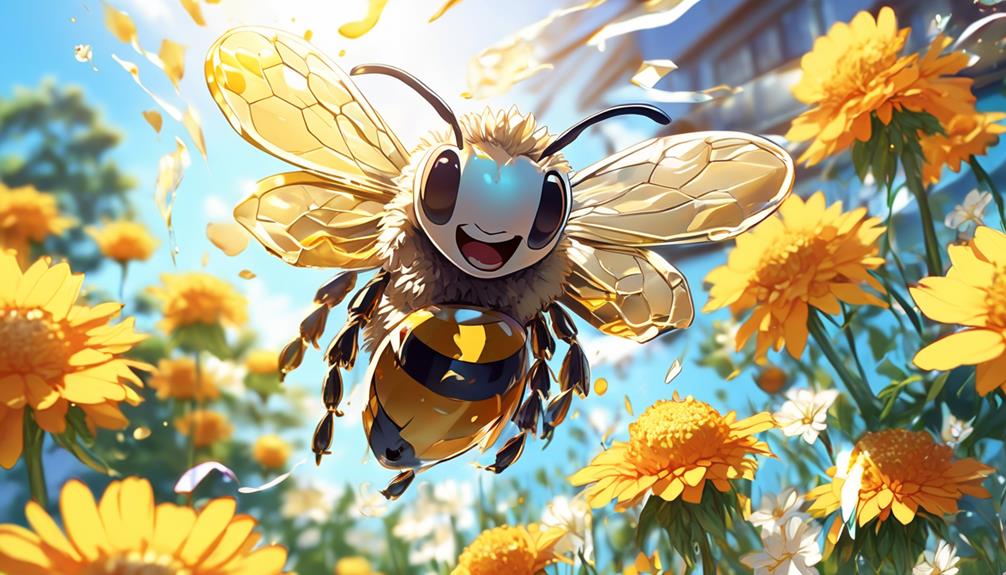
Do Bees Like Aluminum Foil
As a beekeeper, you've probably heard the saying, 'You can catch more flies with honey than vinegar.' But have you ever wondered if the same principle applies to bees and, say, aluminum foil? It's a curious question, isn't it?
You're not alone in pondering this. Many have questioned whether our buzzing friends have a preference for this common household material, or if they're repelled by it.
Within this exploration, we'll uncover the science behind bee attraction mechanisms, the role of aluminum foil, and the practical implications for you as a beekeeper.
So, are you ready to unravel this mystery?
Key Takeaways
- Bees are attracted to aluminum foil due to its reflective and malleable properties.
- The visual stimulus created by the light reflecting off the foil attracts bees.
- The heat conductivity of aluminum foil can mimic the warmth of a flower, further attracting bees.
- Beekeepers can utilize aluminum foil for various applications such as hive insulation and attracting wandering bees.
Understanding Bee Attraction Mechanisms
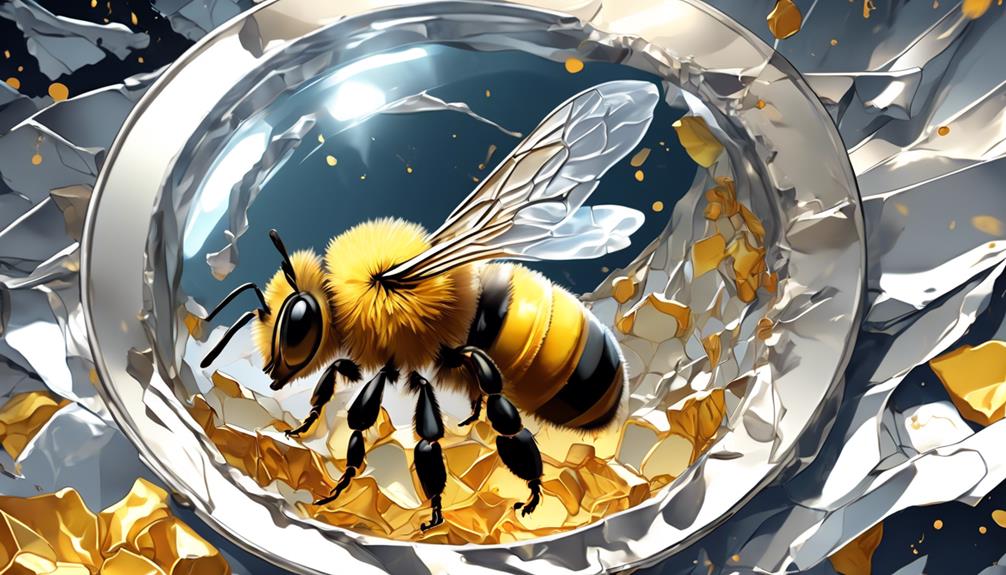
To truly comprehend why bees are drawn to aluminum foil, you need to delve into the intricate bee attraction mechanisms, which are deeply rooted in their complex sensory and communicative systems. Bees don't just randomly select flowers or objects to explore. They're guided by sensory cues, which include color, shape, texture, and fragrance.
Bees, you see, are incredibly sensitive to visual and olfactory stimuli. Their eyes are equipped with photoreceptor cells attuned to specific wavelengths of light, especially in the ultraviolet range. This explains their strong attraction to brightly colored flowers.
Now, regarding aluminum foil, it's the reflective property that catches a bee's attention. The foil's shiny surface reflects UV light, tricking the bee into thinking it's a nectar-rich flower. Your garden-variety aluminum foil also has a unique texture that may mimic the smoothness of petals for a bee's sensitive antennae.
But remember, bees primarily use their sense of smell to locate flowers. While aluminum foil doesn't emit a floral scent, it might carry residual odors attractive to bees, especially if it's been in contact with sweet substances. So, it's not the foil per se that bees love, but its reflective quality and potential odor.
The Science Behind Aluminum Foil
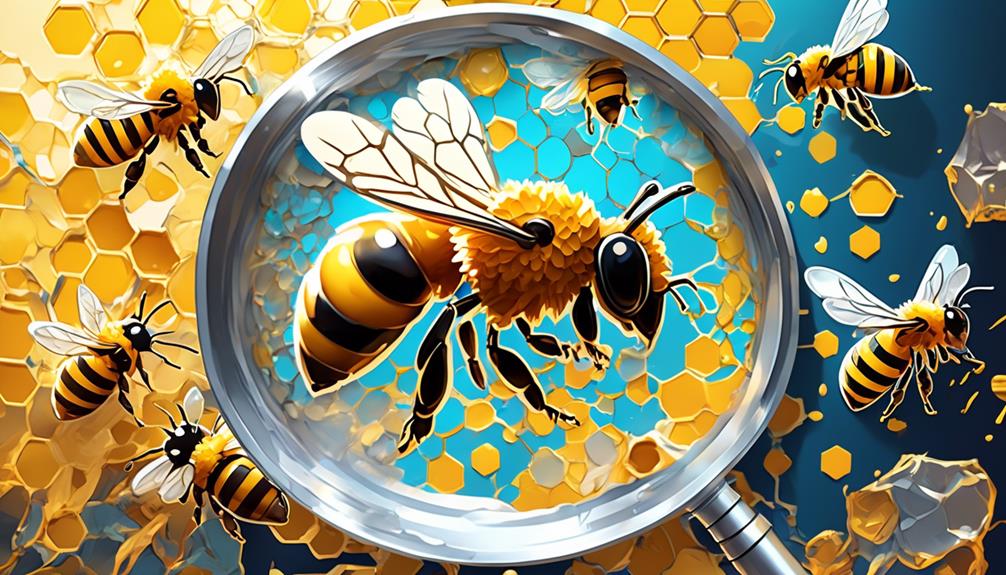
Understanding the science behind aluminum foil's properties and structure can help you grasp why its reflective quality is so enticing to bees. Aluminum foil is made from a metallic element, aluminum, which is abundant in the earth's crust. It's processed into thin sheets, which are highly reflective due to the arrangement of aluminum atoms and their interaction with light.
The table below illustrates the key properties of aluminum foil:
Property | Explanation | Relevance to Bees |
|---|---|---|
Reflectivity | Due to the alignment of atoms, aluminum foil reflects up to 98% of light | Bees are attracted to light and shiny objects |
Electrical Conductivity | Aluminum is a good conductor of electricity | Not directly relevant to bees but interesting nonetheless |
Malleability | Aluminum foil can be easily shaped and molded | This allows for diverse uses, possibly affecting where bees encounter it |
The unique combination of reflectivity and malleability makes aluminum foil a common household item. The foil's ability to reflect light is what attracts bees. They're drawn to its bright, shiny surface, mistaking it for water or flower nectar. So, the next time you see bees buzzing around your aluminum-wrapped sandwich, you'll know why!
Observations in Bee Behavior Around Foil
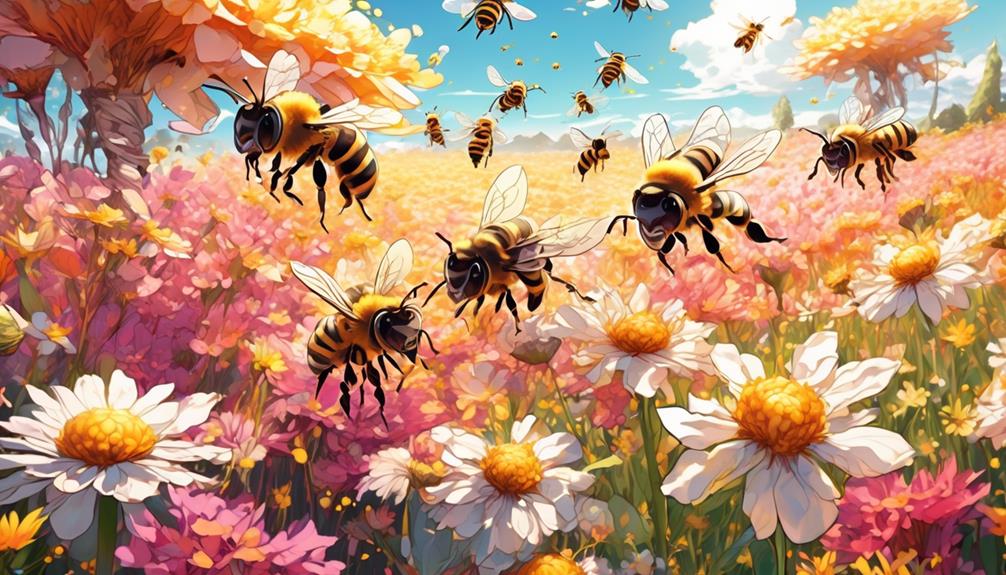
You've probably noticed bees buzzing suspiciously around your picnic spread, specifically targeting the aluminum foil. This isn't a random occurrence, but a fascinating example of bee behavior that's grounded in science.
Bees, like many insects, are attracted to shiny objects. They often confuse the reflective surface of aluminum foil with water, which they need for survival. The bees' compound eyes, made up of thousands of individual lenses, are sensitive to light and movement. They see the world in a mosaic pattern, and the light reflecting off the foil creates a visual stimulus they can't resist.
Moreover, the foil's heat conductivity plays a role. As the sun warms the foil, it radiates heat, which bees detect with their antennae. This thermal marker can mimic the warmth of a promising flower, tricking bees into investigating.
However, once they land on the foil, they quickly realize it's not a food source. Bees have an advanced sense of taste, allowing them to detect sweet nectar or pollen. The lack of these on aluminum foil results in their quick departure.
Experiments and Research Findings
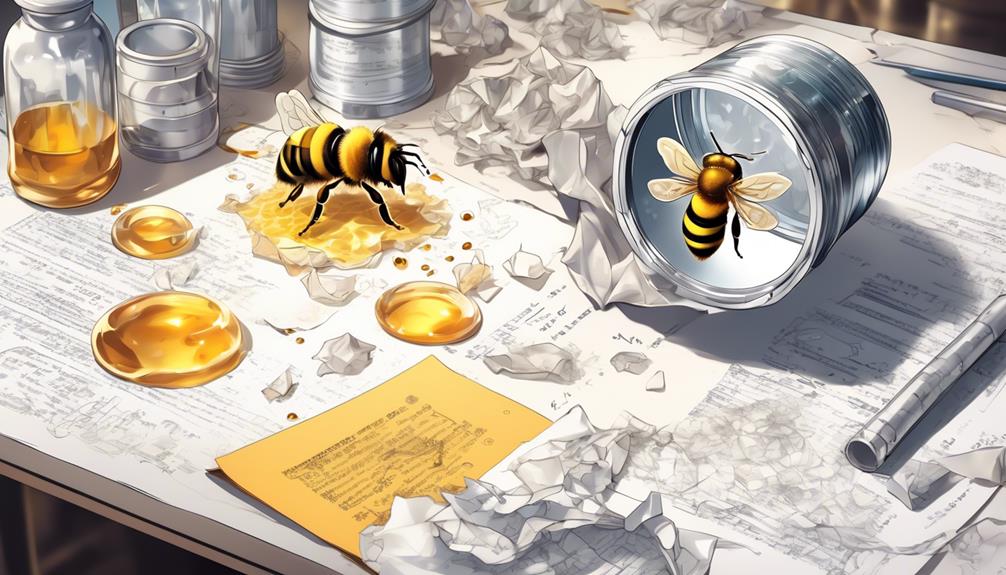
Let's delve into some fascinating studies conducted on this phenomenon, where researchers used a blend of controlled experiments and field observations to better comprehend bees' attraction to aluminum foil.
In one controlled experiment, scientists presented bees with two options: a sugar solution on aluminum foil and the same solution on a non-reflective surface. The bees overwhelmingly chose the foil. This suggested that bees might be attracted to the reflective surface of the foil, possibly mistaking it for water.
In a related field study, researchers noticed bees' unusual behavior around campers' discarded aluminum foil. The bees seemed to hover around the foil, despite the absence of food sources, reinforcing the hypothesis that bees are attracted to its shiny surface.
But what's truly intriguing is a recent study suggesting that bees may also be drawn to the electric field generated by aluminum. Bees are known to be sensitive to electromagnetic fields. Could this add another layer to their attraction to foil?
These findings open up new avenues for research. For example, could we use aluminum foil to lure and trap harmful bee species? Or conversely, could excessive aluminum disposal impact bee populations? It's a fascinating area that warrants further investigation.
Practical Implications for Beekeepers
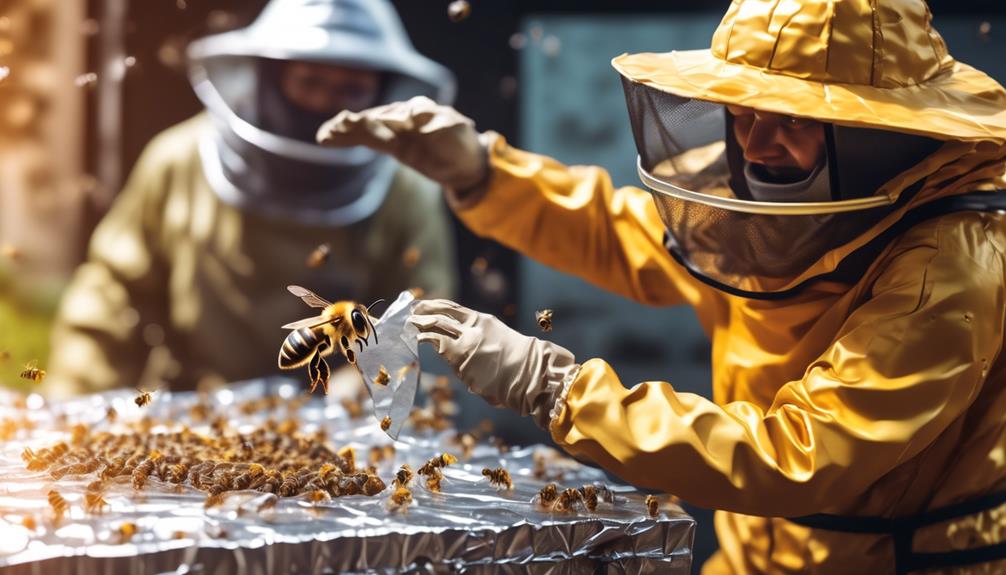
From these scientific insights, beekeepers could potentially harness the allure of aluminum foil to improve their beekeeping practices. You might consider incorporating aluminum foil into your apiary setup. It's not just about the bees' attraction to the shiny material, but also the practical benefits it could provide.
Here's a table with some possible applications:
Use | Benefit | Implementation |
|---|---|---|
Hive Insulation | Temperature regulation | Wrap hive exterior in foil |
Pest Deterrent | Foil's reflective properties can deter pests | Place foil around hive base |
Bee Attraction | Bees are attracted to shiny surfaces | Use foil in swarm traps |
Hive insulation is a key benefit. Proper temperature regulation can help maintain the health and productivity of your colony. As for pest deterrent, the reflective properties of aluminum foil can potentially disorient or deter certain pests. Finally, the bees' attraction to shiny surfaces could be leveraged in swarm traps, luring wandering bees back to the hive.
Frequently Asked Questions
What Other Materials Have Been Observed to Attract or Repel Bees?
You're probably aware that bees are attracted to bright, floral colors. However, they're also repelled by certain materials. Dark, shiny surfaces, such as those of cars or windows, can deter them.
They don't like synthetic fabrics, either. Certain scents, like peppermint, citronella, and eucalyptus, can also keep them at bay.
It's interesting, isn't it, how bees interact with various materials in their environment?
How Does the Presence of Aluminum Foil Affect the Overall Health and Behavior of Bees?
You're wondering how aluminum foil impacts bees' health and behavior.
It's not known to harm them directly, but it doesn't attract them either. If they're exposed to it, they'd likely ignore it, focusing on natural sources for food and shelter instead.
However, if foil obstructs their habitat or food sources, it could indirectly affect their wellbeing.
It's best to keep their environment as natural as possible for optimal health and behavior.
Can the Use of Aluminum Foil in Gardening or Agriculture Have Any Negative Impacts on Bee Populations?
You're right to consider the potential impacts on bee populations. While there's limited research on this topic, it's possible aluminum foil could disrupt bee navigation or communication.
However, it's crucial to note that the bigger threat to bees is the loss of natural habitat, pesticide exposure, and climate change.
Are There Specific Types of Bees That Are More Attracted to Aluminum Foil Than Others?
You're inquiring if certain bee species are more attracted to aluminum foil than others. There's not a lot of scientific evidence suggesting such a preference.
Bees, in general, aren't attracted to aluminum foil. They're more drawn to flowers due to their colors and scents. Using aluminum foil in your garden shouldn't disproportionately attract or repel any specific type of bee.
It's always best to check with a local beekeeper or entomologist for more specific advice.
Can the Reflective Properties of Aluminum Foil Influence the Navigation Patterns of Bees?
Yes, the reflective properties of aluminum foil can influence bees' navigation patterns.
You see, bees navigate using polarized light. Aluminum foil's reflective surface alters this light, confusing bees.
It's similar to how you'd feel disoriented in a room of mirrors.
So, while bees aren't particularly fond of aluminum foil, it can certainly affect their behavior.
It's a fascinating insight into how even something as commonplace as foil can impact the natural world.
Conclusion
In conclusion, bees don't particularly like aluminum foil. It doesn't emit any chemical signals that would attract them. In fact, reflecting light off the foil may even deter them. However, more research is needed to fully understand this behavior.
For now, if you're a beekeeper, you might consider using aluminum foil as a deterrent, but remember, it's not a foolproof method. Always stay informed and keep researching for the best beekeeping practices.


